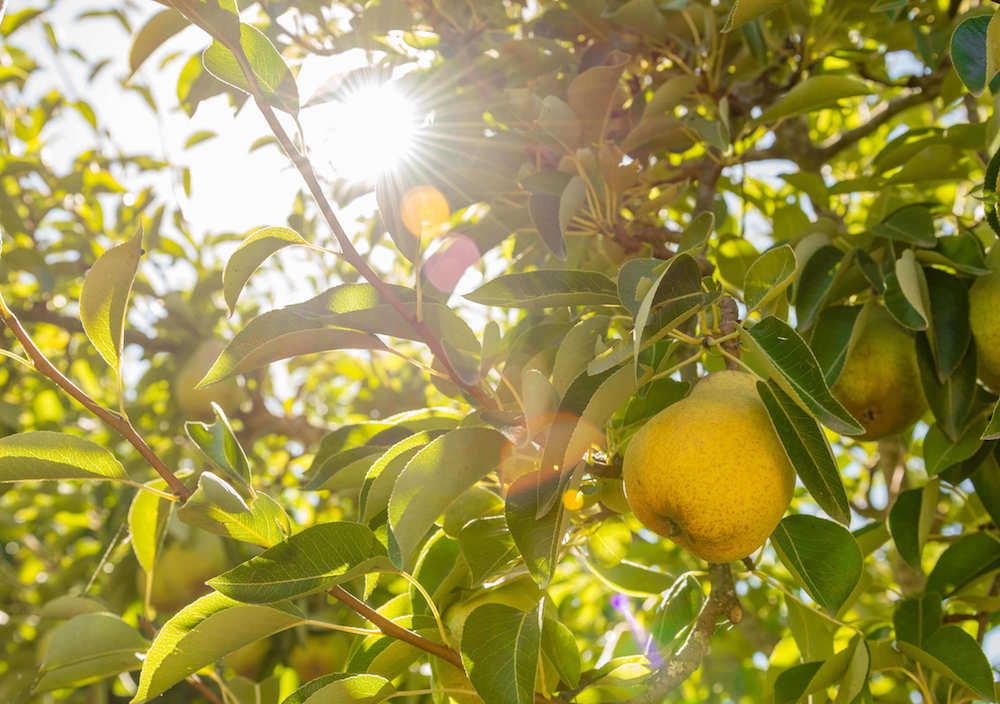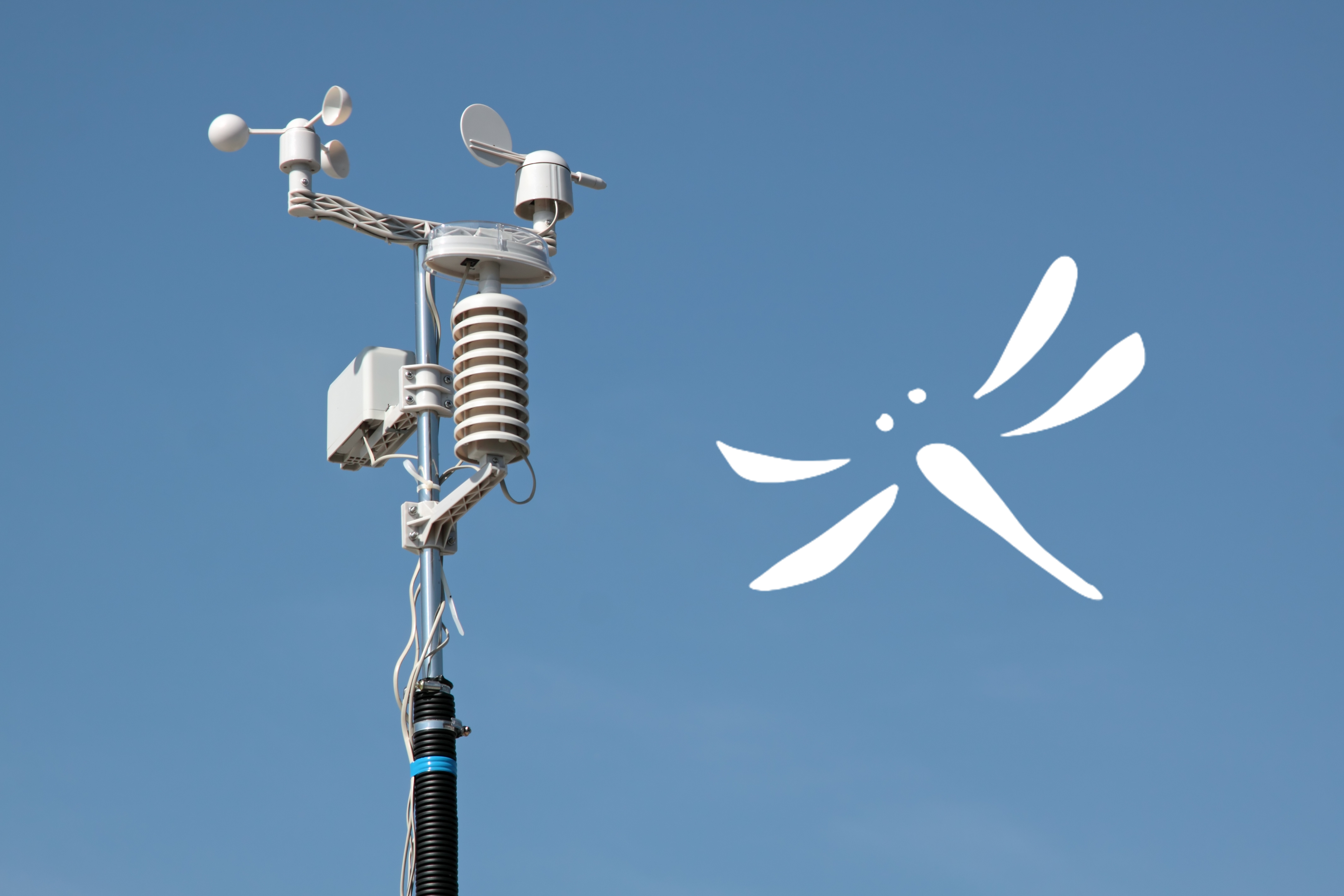Last month, an extreme heatwave broke records and sweltered citizens across Australia. The six days between January 12 and 17 rank within the country's ten hottest days ever, with temperatures soaring to a height of 49.1 degrees Celsius (120 degrees Fahrenheit). The town of Marble Bar in Northwetern Australia suffered 20 consecutive days of above 40 degrees Celsius temperatures.
Blisteringly high temperatures are as rough on plants as they are on us. Kris Werner, head of Dried Tree Fruits Australia, even reported that the heat has been cooking his stonefruit on their branches. "[The fruit] burn on the inside, they become squashy and you can't use them," he told the Australian Broadcasting Corporation. Says Lockyer Valley Growers president Michael Sippel, "Everyone is in survival mode right now, keeping water up to the crops they have and hoping the temperatures will turn."
Of course, Australia's devastating heat conditions are rare. However hot, dry, and sunny conditions of a lesser severity can still cause stress and weaknesses in even the toughest plant. UV radiation can cause sub-lethal injury on leaves and sunburn fruit, which leads to damaged appearance and internal quality. Intense sunlight can cause photosynthesis to slow down or stop, resulting in less manufactured carbohydrates, which can reduce yields and fruit quality. Drought stress will reduce fruit size and stunt growth especially in young trees. In today's blog post, the follow-up to our earlier post Protecting Crops in Winter, we discuss different ways in which growers protect their crops from brutally warm temperatures, sunlight, and drought conditions.
Summer Crop Protection Methods
Think Ahead
If at all possible, ensure that any plants that need to be transplanted are done so before the summer months. Plants can be transplanted from containers during the summer, but only if those transplanted plants are watered thoroughly and regularly for several weeks after planting.
Planting decisions can be made to mitigate heat stress down the line. Plants placed to grow in the shade tend to do better than plants transplanted to full sun during the summer.
Irrigation
Needless to say, irrigation needs increase as the mercury rises. Many growers turn to overhead sprinkling systems in the hotter months. These systems, long-time industry solutions, spray water over the orchard canopy and reduce temperatures via evaporation.
However, although these systems are great at protecting fruit from high temperatures and sunlight, they can raise the risk of foliar diseases by splashing pathogens from infected plants to nearby healthy plants. They also use a lot of water - up to 40% more than normal irrigation requirements.
Water quality may also be a critical consideration in some areas of the globe. Growers in some parts of California, for example, face salt or other mineral excess problems. Irrigation water should be tested for its mineral content to avoid toxicity to plants. Sources of irrigation water like rivers, creeks, and ponds can also harbor plant pathogens.
Growers should also take care to avoid over-irrigating. Over-irrigation has been found to be the #1 cause of tree loss, and is an especially lethal move when combined with poor drainage.
Overhead Netting
 Overhead netting has become a popular crop-cooling method in Europe. The brightly-colored netting, made from a durable polypropylene, reduces sunburn and temperatures and also offers protection from birds, wind, and hail. It has also been suggested that netting may offer worker safety benefits by shielding workers' skin from the sun's rays.
Overhead netting has become a popular crop-cooling method in Europe. The brightly-colored netting, made from a durable polypropylene, reduces sunburn and temperatures and also offers protection from birds, wind, and hail. It has also been suggested that netting may offer worker safety benefits by shielding workers' skin from the sun's rays.
Washington State University is currently conducting a multi-year study to examine how different colors of netting affect sunburn and stress in trees. Red, blue, and pearl netting all reduce light by 22%. But each colour creates different spectrums with significantly differing results. Based on previous studies, scientists know red tends to promote fruit color. Blue reduces vegetative growth. Pearl improves the distribution of light.
Netting is not without its challenges. Costs can range from $9,000 to $12,000 per acre. The nets need to be retracted and rolled up each year during the winter to extend the life of the fabric. Excessive shading can also dampen a tree’s productivity in areas that don't receive consistently strong sunlight.
Mulching
Mulching is one of the most recommended methods to protect trees and berry plants. Mulch material can be compost, composted manure, raked leaves, dried grass clippings, or any other organic material, such as bark. Materials that are not aged, like fresh sawdust or fresh grass clippings, will deplete the soil of nitrogen temporarily and negatively impact plant growth. Mulch helps soil retain moisture , and it creates cooler microenvironments at the base of the plant. Mulches have been used at various times throughout history in gardens and fields; in the 1800’s and prior, it was common for farmers to use a mulch of large stones around fruit trees and other plants.
Soil Management
While on the topic of mulching, growers should pair crops that do better in acidic soil (pH 4 to 5.5) - like blueberries, blackberries, raspberries, cranberries, potatoes, and sweet potatoes - with a mulch made from acidic material (like pine bark, pine needles, peat moss, or cotton seed hulls) when soil temperatures range between 25 degrees Celsius to 39 degrees Celsius (77 to 102.2 degrees Fahrenheit). At these temperatures, soil pH increases. The acidic mulch will reduce the soil pH, benefitting these acidic soil crops' growth.

Avoid Pruning
If possible, avoid pruning plants and trees and avoid planting them during the heat of summer. If a tree or plant has to be pruned (due to disease or to make space on a sidewalk, for instance) make sure that plant is given extra fertilizer and water after it’s been trimmed. Also, only prune on comparatively cool days when the forecast calls for cooler temperatures in the following 3 to 4 days.
Apply Light-Reflecting Materials
When applied to the tree canopy, light-reflecting materials - like kaolin clay, calcium carbonate, talc, or commercial products like RAYNOX and Surround WP - form a microscopic particle film that protects leaves and fruit from high UV light and heat. This can slow the photosynthetic rate in the tree canopy.
Growers can also opt to apply a white latex paint to the trunks of young trees in order to reflect sunlight and reduce injury from sun burn.
Fertilize
Fertilizing may not be typically high-priority task in the summer. However, as healthy plants resist drought better than nutrient-deprived plants, fertilizing can be an effective safeguard against heat stress.
If young and newly-planted fruit trees and berry plants appear to be suffering in the summer heat, they can be fertilized. More mature fruit trees and berry plants that are bearing fruit or berries should be fertilized more sparingly, however, to avoid harming the fruit. Vegetables can be fertilized on a regular basis during the summer.
Keeping Tabs On The Weather with Croptracker
Perhaps most importantly, growers need to know the weather conditions and pay careful attention to what’s going on outside. “Minimizing weather risk requires knowledge,” says Beth Bishop, the coordinator of Michigan State University's Enviro-weather program. “Growers need to know the current weather conditions and have an idea of what they will be in the near future."
Croptracker can integrate with 2 weather data systems to help growers keep tabs on the weather conditions currently affecting their crops and those heading their way.
 Weather INnovations Consulting LP (WIN) collects weather data from 1600+ locations around the world. It also boasts an environmental monitoring network that encompasses Ontario, Manitoba, Saskatchewan, Michigan, and Western Europe. The monitoring system can report on temperature, relative humidity, rain, wind, solar radiation, leaf wetness, soil temperature, and soil moisture. WIN's networks are run on radio and cellular stations that report to the WIN database at regular intervals. Croptracker allows users to integrate WIN into their systems to automatically receive and postprocess raw weather data inputs.
Weather INnovations Consulting LP (WIN) collects weather data from 1600+ locations around the world. It also boasts an environmental monitoring network that encompasses Ontario, Manitoba, Saskatchewan, Michigan, and Western Europe. The monitoring system can report on temperature, relative humidity, rain, wind, solar radiation, leaf wetness, soil temperature, and soil moisture. WIN's networks are run on radio and cellular stations that report to the WIN database at regular intervals. Croptracker allows users to integrate WIN into their systems to automatically receive and postprocess raw weather data inputs.
Hoskin Scientific is a supplier of testing and monitoring instrumentation to the Canadian market with offices in Vancouver, Burlington, and Montreal. Their Environmental Department provides solutions for monitoring and sampling biological and chemical parameters in the environment. In addition to weather stations and agrimeteorological stations, specific areas of focus include water quality, water quantity, soil moisture, plant science, weather stations, indoor air quality, aquatic sampling, and oceanography. Croptracker users can link their Hoskin Scientific weather station and agrimeteorological station products to their Croptracker account and feed in and postprocess the instruments' collected raw data in their system automatically.
Want to learn more about integrating weather station data providers with your Croptracker system? Want a refresher on any of Croptracker's features? Head over to our Knowledge Base, where you'll find step-by-step tutorials as well as common troubleshooting tips and more. And as always, if you're ever stuck, never hesitate to e-mail us at support@croptracker.com or Live Chat with us by clicking the green speech bubble ![]() in your bottom right-hand corner. We're always happy to help you let Croptracker make your farm become more efficient, safe, and profitable!
in your bottom right-hand corner. We're always happy to help you let Croptracker make your farm become more efficient, safe, and profitable!
| Missed Last Week's Blog Post? Croptracker is Headed to the 2019 Ontario Fruit & Vegetable Convention! |


